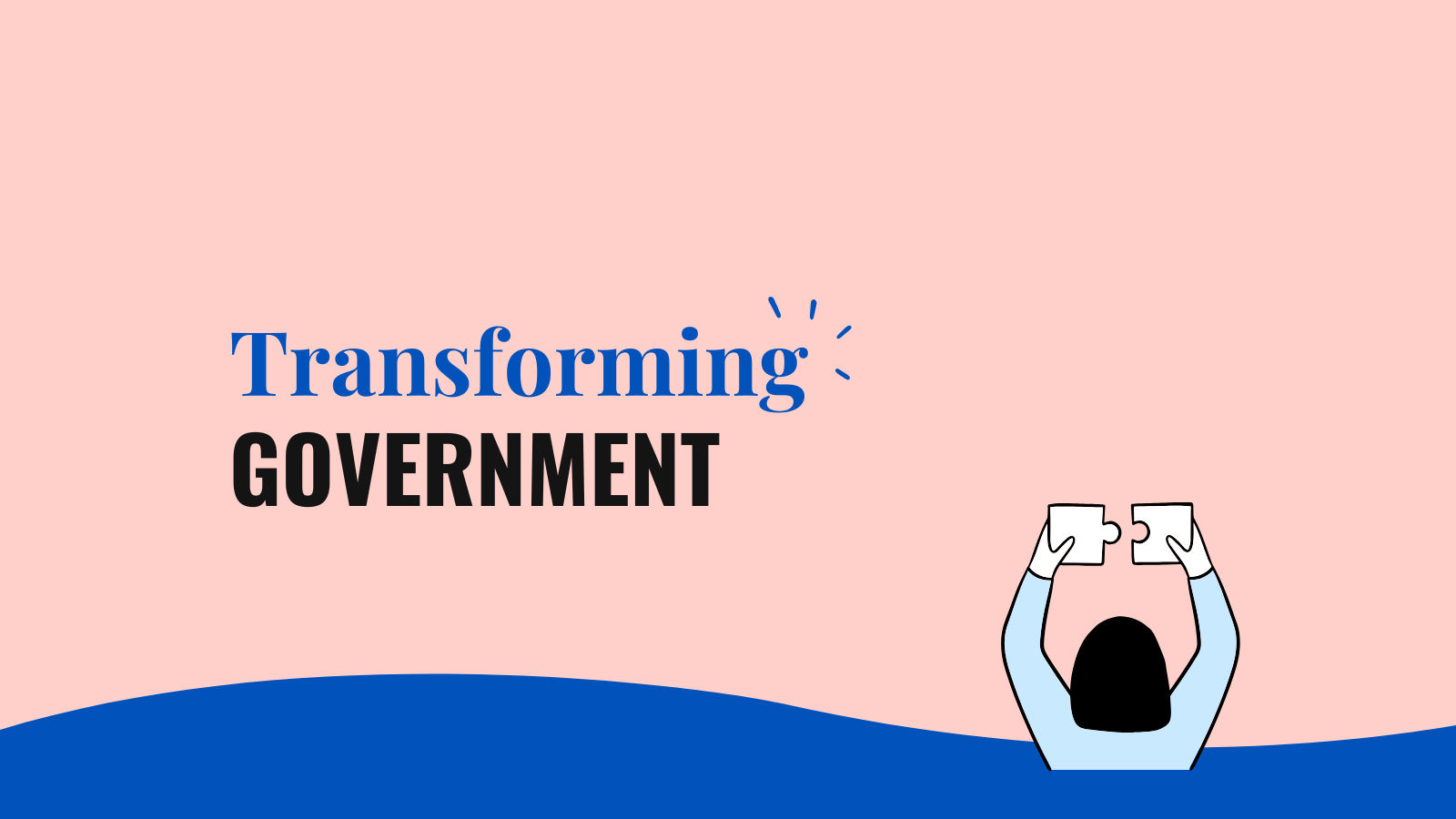When we talk about technological innovation, we tend to think about shiny new things.
Often, though, tech maturity and advancement shouldn’t just be about making something new. It can be about reshaping and rewiring our approach to existing technology. That’s a crucial lesson for the public sector as it grapples with the global challenges of our fast-changing, post-pandemic world.
Many public services are underperforming despite technology investment, and sometimes even because of it. Rebooting is a challenge, but it could also multiply the value and impact of those services to make our society better.
So, how do we press restart?
1) Be integrated, not siloed
To be effective, digital transformation must be baked into the DNA of an organisation’s systems, teams and processes. This means moving technology out of the IT department. It means IT specialists see the rest of their organisation as their colleagues, not their clients.
It also means breaking away from siloed executive boards and appointing Chief Digital and Information Officers that implement modern technology thinking into every aspect of the organisation’s long term planning.
A more integrated approach also means that organisations should consider building, and not only just buying technology solutions. The changing technology landscape means it’s now much easier to build, test and deliver software which is truly designed around the needs of end users.
2) Use open, loosely-coupled, flexible tech solutions
A flexible approach to technology sets out the ways in which services can be easily adapted for changing public needs. One key way to take a more flexible approach is to use small and connected technology solutions. This loosely coupled kind of technology breaks down applications into component functions which are all built and managed separately, so they’re more nimble and can’t be brought down by one single point of failure.
Using low code and no code software can also be a flexible fix, particularly when moving existing, simple transactions online. For example, a local council might use this approach which reduces or completely removes the need to build new code, to replace simple paper processes cheaply and easily.
Meanwhile, taking an open source code approach has had a multiplying effect for many public sector digital transformation projects. During the Covid-19 pandemic, teams built new services more quickly when they were able to access the open code that underpinned similar services. For example, Essex County Council’s directory of services for children and families was built more easily from open source code directories that were originally developed by teams in Camden and Buckinghamshire.
3) Adopt a platform mentality
When platform thinking is applied to business models, it unlocks spare capacity within the system. Airbnb is a great case in point: the online accommodation platform taps into the spare capacity within private property and connects it to people looking for places to stay. The benefits of this are a quicker service and lower transaction costs for both the business and its end user.
We’re beginning to see how this way of thinking can be applied in the public sector too. For example, the government’s Notify platform allows public sector bodies and local authorities to send people important messages ranging from council tax reminders to doctors appointment details, saving taxpayers an average of £35 million a year over the next 5 years.
In future, platform thinking might ask: how could a council operate as a platform to improve mental health outcomes? How could it make better use of local community links to do this? Asking these questions would help the council unlock its strongest assets — its systems, its places and its relationships. And that could create more personalised, targeted services, which are more adaptable to changing public needs.
TPXimpact has been applying these principles in practice, designing platform models for government subsidised bus services in Essex and Suffolk. Unlocking spare capacity from local, private taxi firms meant we were able to pilot on-demand bus routes, helping people feel more connected in rural areas.
It’s a great example of how the public sector can move and innovate, so that platform business models and all their benefits are no longer the exclusive domain of technology startups.
Let’s work on the harder problems
Following these key principles will help transform our public services now and for future generations. Being prepared to do the hard work to deal with enterprise and legacy dependencies and ways of working is a big challenge, but taking that challenge on and getting it right means we can use technology to work on solving harder problems, to achieve more value and impact, to reprogramme a better society.
Find out more about how the public sector can increase the value and impact of its services in our new book Multiplied, available to buy from Amazon and Waterstones. Multiplied explores the new and creative ways in which we can unlock the technology, data and design potential of the public sector, to do more for Britain’s communities.
All profits from the book are being donated to the Association of NHS Charities.

Transforming Government
We partner with the institutions of Government to help them work better. Our approach delivers digital transformation in government that is user-centred, data-led and cost-effective.
Work with us
Introducing Multiplied - a new book about public sector digital transformation
Multiplied focuses on how we can unlock more of the potential of technology, data and design in the public sector, while also working more closely with communities.
Read moreOur recent insights
Transformation is for everyone. We love sharing our thoughts, approaches, learning and research all gained from the work we do.

Transforming archiving through AI
How artificial intelligence can turn archives into living resources that shape the future while preserving the past.
Read more
Making data deliver for public services
The government must prioritise sharing, AI management, and public trust to reach its data potential.
Read more
Keeping your systems on track with digital MOTs
Outdated tech can hold back organisations. Learn how digital MOTs can assess and future-proof your systems.
Read more


